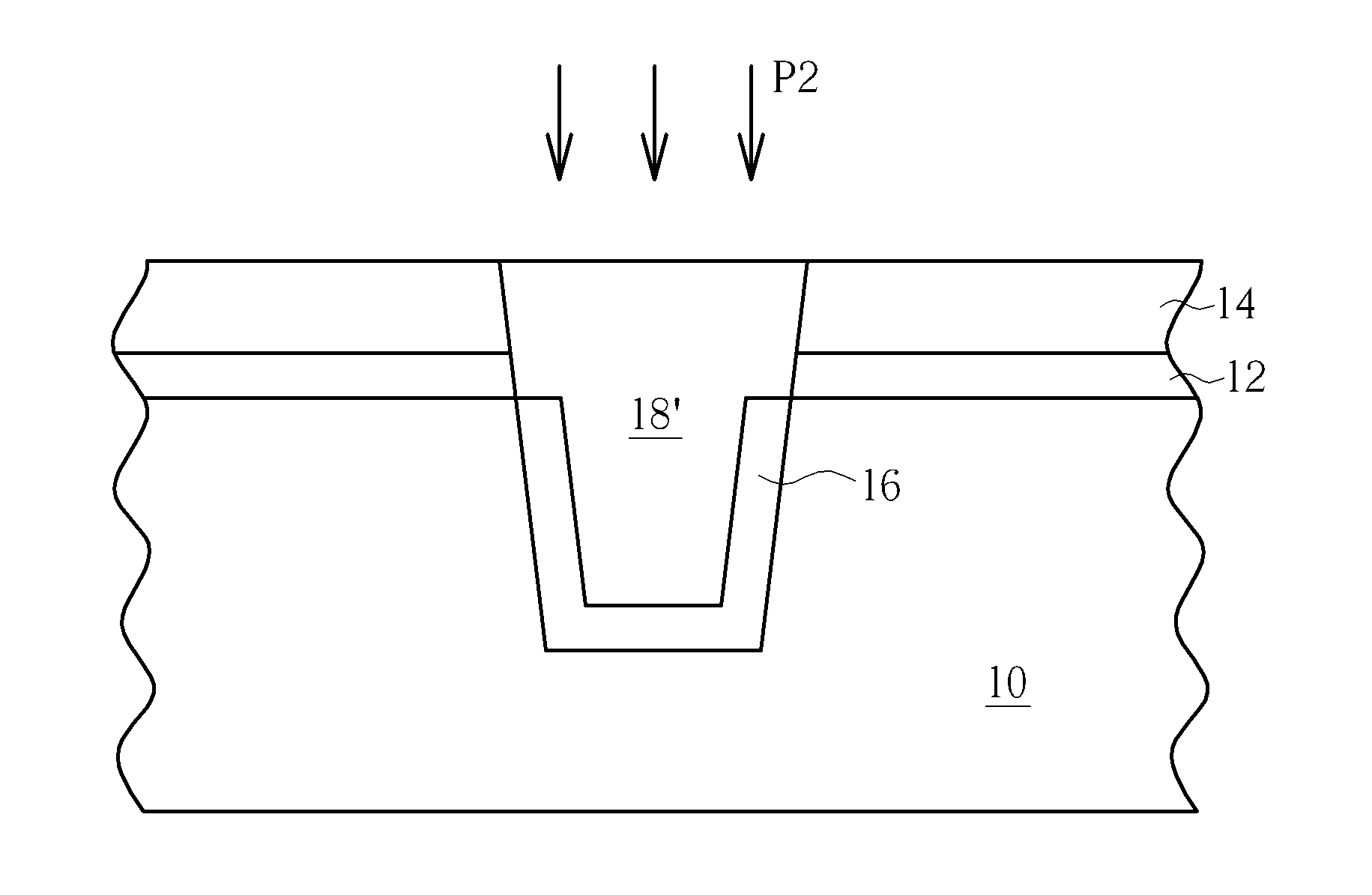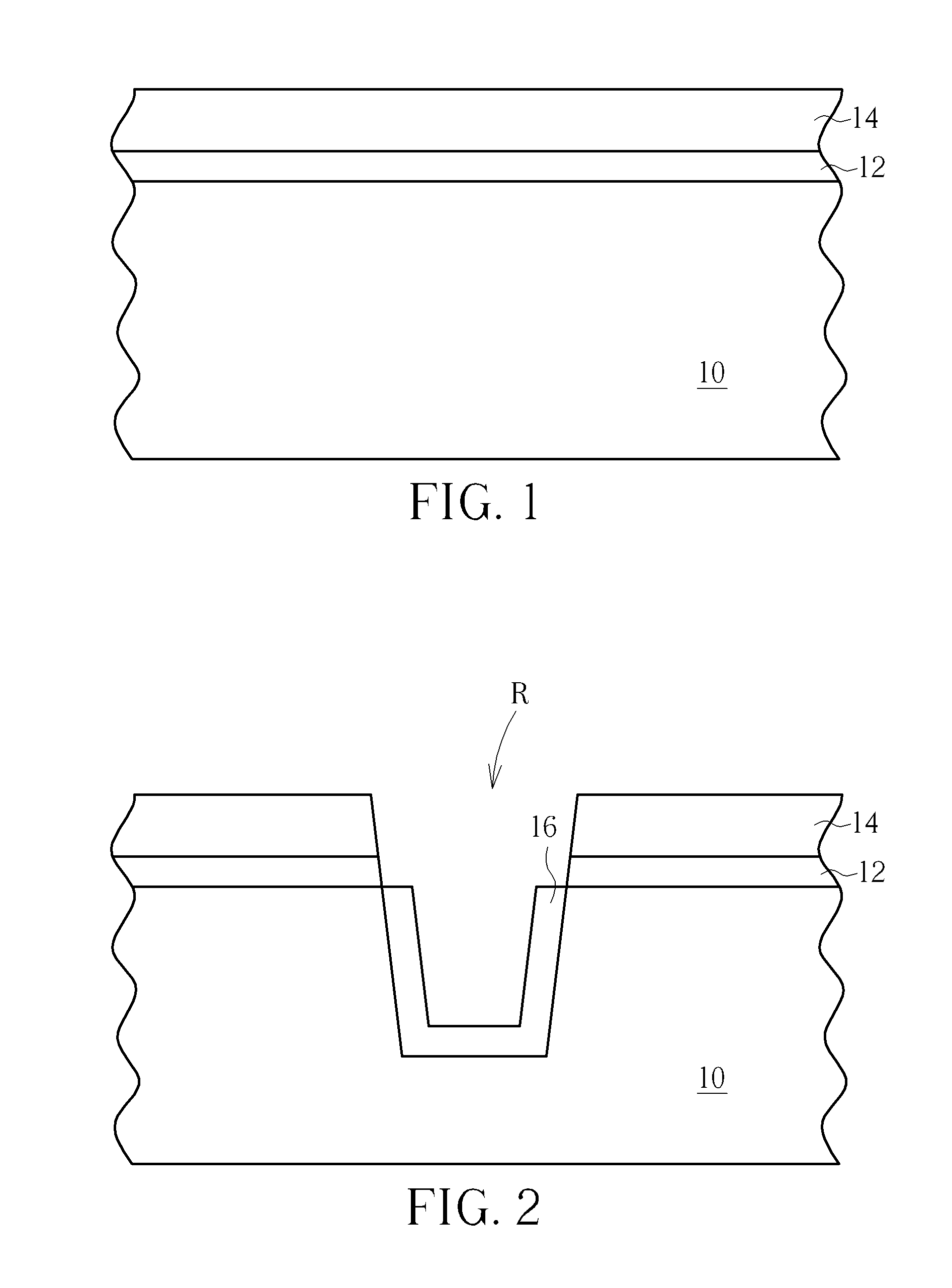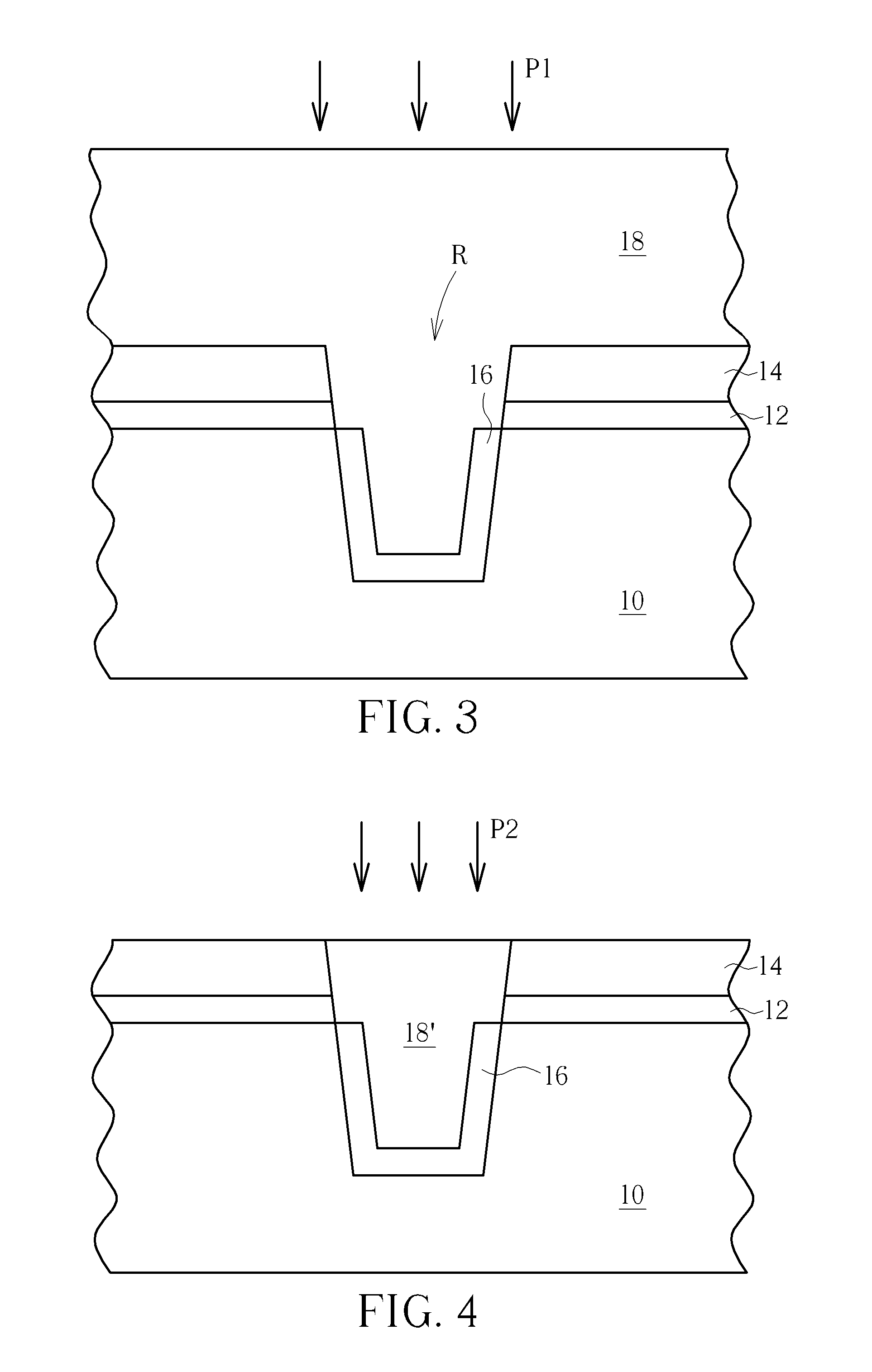Method of fabricating dielectric layer and shallow trench isolation
a dielectric layer and trench isolation technology, applied in the manufacturing of basic electric elements, electric devices, semiconductor/solid-state devices, etc., can solve the problems of voids and overhangs in the formed sti, and achieve the effect of good gap filling effect, structural completeness and enhanced isolation effect of the dielectric layer
- Summary
- Abstract
- Description
- Claims
- Application Information
AI Technical Summary
Benefits of technology
Problems solved by technology
Method used
Image
Examples
Embodiment Construction
[0017]To provide a better understanding of the present invention, preferred exemplary embodiments will be described in detail. The preferred exemplary embodiments of the present invention are illustrated in the accompanying drawings with numbered elements.
[0018]Please refer to FIG. 1 through FIG. 6, which illustrate a method of fabricating a shallow trench isolation (STI) according to a preferred exemplary embodiment of the present invention. As shown in FIG. 1, a silicon oxide layer 12 which could be formed through thermal oxidation method or chemical vapor deposition process and a silicon nitride layer 14 which could be formed through low pressure chemical vapor deposition (LPCVD) process are sequentially formed on a substrate 10. The substrate 10 may be a semiconductor substrate such as a silicon substrate, a silicon containing substrate, a III-V group-on-silicon (such as GaN-on-silicon) substrate, a graphene-on-silicon substrate or a silicon-on-insulator (SOI) substrate. The sil...
PUM
| Property | Measurement | Unit |
|---|---|---|
| temperature | aaaaa | aaaaa |
| temperature | aaaaa | aaaaa |
| temperature | aaaaa | aaaaa |
Abstract
Description
Claims
Application Information
 Login to View More
Login to View More - R&D
- Intellectual Property
- Life Sciences
- Materials
- Tech Scout
- Unparalleled Data Quality
- Higher Quality Content
- 60% Fewer Hallucinations
Browse by: Latest US Patents, China's latest patents, Technical Efficacy Thesaurus, Application Domain, Technology Topic, Popular Technical Reports.
© 2025 PatSnap. All rights reserved.Legal|Privacy policy|Modern Slavery Act Transparency Statement|Sitemap|About US| Contact US: help@patsnap.com



